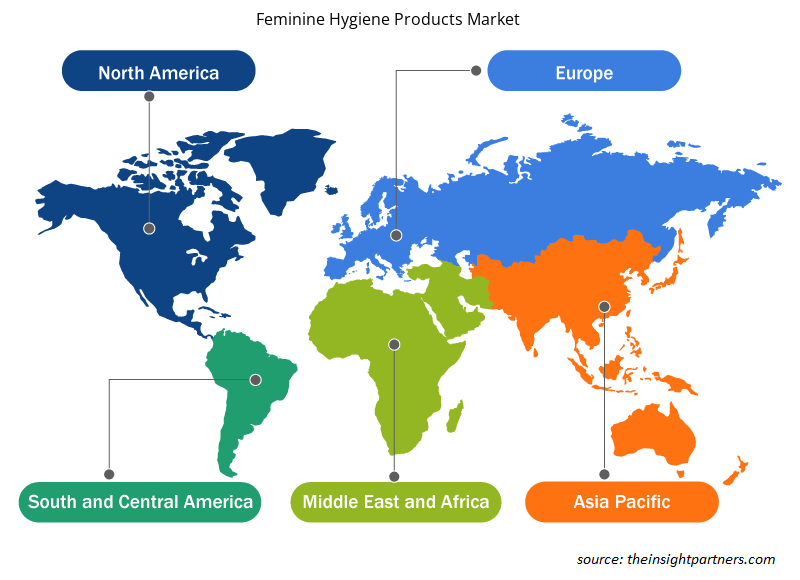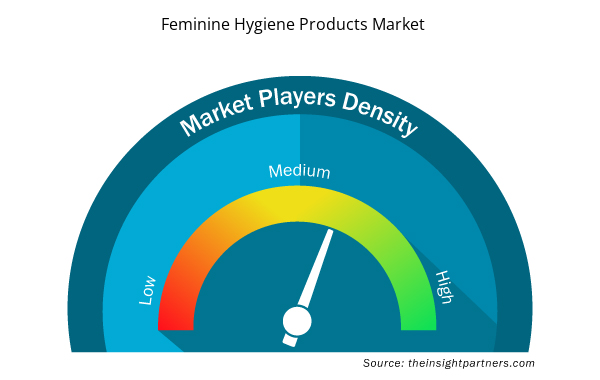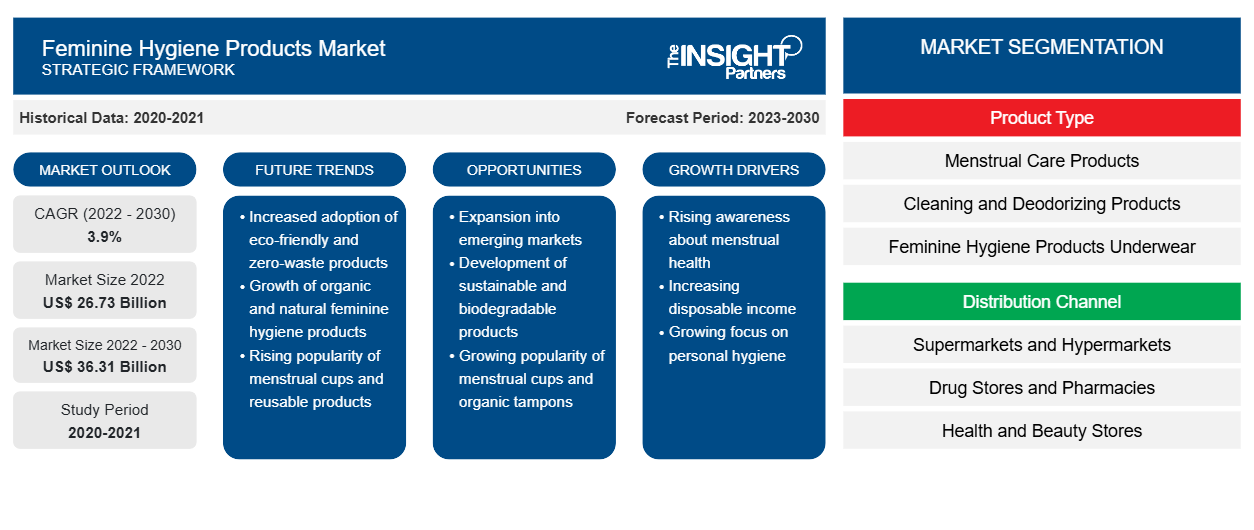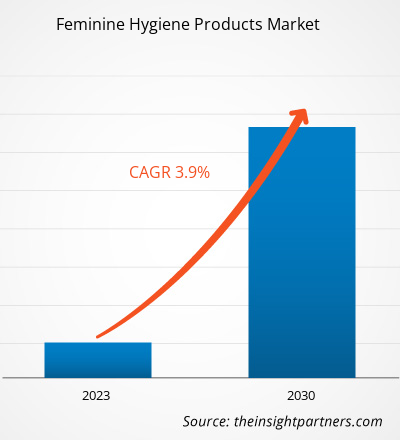[調査レポート] 女性用衛生用品市場は2022年に267億3,333万米ドルと評価され、2030年までに363億529万米ドルに達すると予測されており、2022年から2030年にかけて3.9%のCAGRを記録すると予想されています。
市場洞察とアナリストの見解:
ヨーロッパにおける女性用衛生用品市場は、主に個人衛生の維持に対する意識の高まりと、女性用衛生に関する行政機関の取り組みの増加によって推進されています。また、女性の個人衛生に関する意識は、さまざまな政府の取り組みやソーシャルメディアキャンペーンによって高まっています。これらの取り組みやキャンペーンは、女性用衛生用品の理解と受容の向上に貢献しています。したがって、個人衛生に対する意識の高まりは、女性用衛生用品市場の成長を推進しています。北米、ヨーロッパ、アジア太平洋などの地域は、Edgewell Personal Care Co、Kimberly-Clark Corp、Lune Group Oy Ltd、Me Luna Gmbh、Mooncup Ltd、Ontex BV、Essity Ab、Wuka Ltd、Cotton High Tech SL、The Procter & Gamble Coの中心地であり、女性用衛生用品の需要が高まっています。したがって、これらの企業の存在が世界の女性用衛生用品市場の成長を牽引しています。
成長の原動力と課題:
主要な市場プレーヤーによる戦略的取り組みが、世界的な女性用衛生製品市場の成長を牽引しています。メーカーは、大規模な消費者層を引き付けるために革新的な製品を発売するために、研究開発プロジェクト、パートナーシップ、拡張計画、コラボレーションに多額の投資を行っています。たとえば、2020年6月、Pee Safeは、下着用消毒スプレー、再利用可能な生理用ナプキン、オキソ生分解性使い捨てバッグ、および親密な衛生パウダーを含む新しい親密な衛生製品のシリーズを発売しました。主要な市場プレーヤーは、合併や買収などの戦略的取り組みを採用して、製品ポートフォリオと地理的プレゼンスを拡大しています。たとえば、2022年11月、Edgewell Personal Care社はBillie Inc.の買収を発表しました。この買収は、プレミア女性用シェービングおよびボディケアブランドの製品ポートフォリオを拡大することを目的としていました。
さらに、化学物質の有害な影響に対する意識の高まりと、環境に優しくクリーンなパーソナルケア製品の使用傾向の高まりにより、自然でクリーンな脱毛製品が世界中で人気を集めています。この傾向により、メーカーは顧客の要件に基づいて自然製品を開発するようになりました。たとえば、レキットベンキーザーグループは2022年に脱毛クリームのVeet Pureシリーズを発売し、製品を改良しました。製品ラインには、天然キュウリエキス、アロエベラ、グレープシードオイルが含まれています。このように、このような製品の発売や、高まる消費者需要に応えるその他の戦略は、市場の成長を後押ししています。
要件に合わせてレポートをカスタマイズする
このレポートの一部、国レベルの分析、Excelデータパックなど、あらゆるレポートを無料でカスタマイズできます。また、スタートアップや大学向けのお得なオファーや割引もご利用いただけます。
- このレポートの主要な市場動向を入手してください。この無料サンプルには、市場動向から見積もりや予測に至るまでのデータ分析が含まれます。
レポートのセグメンテーションと範囲:
世界の婦人衛生製品市場は、製品タイプ、流通チャネル、および地域に基づいてセグメント化されています。製品タイプに基づいて、婦人衛生製品市場は、生理用品、洗浄および消臭製品、および婦人衛生下着に分類されます。流通チャネルに基づいて、婦人衛生製品市場は、スーパーマーケットとハイパーマーケット、ドラッグストアと薬局、健康と美容の店、オンライン小売店、その他に分類されます。地理に基づく婦人衛生製品市場は、北米(米国、カナダ、メキシコ)、ヨーロッパ(ドイツ、フランス、イタリア、英国、ロシア、その他のヨーロッパ)、アジア太平洋(オーストラリア、中国、日本、インド、韓国、その他のアジア太平洋)、中東およびアフリカ(南アフリカ、サウジアラビア、UAE、その他の中東およびアフリカ)、および南米および中米(ブラジル、アルゼンチン、その他の南米および中米)に分類されます。
セグメント分析:
製品タイプに基づいて、女性用衛生製品市場は、生理用品、洗浄および消臭製品、女性用衛生下着に分類されます。生理用品セグメントは、女性用衛生製品市場の成長において大きなシェアを占めており、予測期間中に大幅な成長を記録すると予想されています。生理用品(生理用ナプキン、生理用ショーツ、パンティライナー、女性用ワイプ、タンポン、月経カップ、生理用ナプキン、生理用ナプキンなど)は、世界中の女性の間で女性の衛生に対する意識が高まっているため、人気を集めています。さらに、これらの製品の使用が増えていることで、人々の環境に対する感受性が高まっています。そのため、働く女性の専門家やその他の環境に敏感な人々は、快適で使い捨ての生理用品を採用しています。
生理用品は通常、廃棄されて埋め立て地に送られ、生分解されない膨大な量の廃棄物を生み出します。その結果、マイクロプラスチックの形で環境中に残留し、水生および陸生の生態系に重大な脅威をもたらします。この懸念に対する認識が高まったため、多くの人が月経カップや月経ディスク、布製の再利用可能なナプキンなどの再利用可能な生理用品に切り替えています。BBCのウェブサイトに掲載された記事とGoogleトレンドの検索用語インデックスによると、再利用可能な生理用品の検索は毎年急増しています。
地域分析:
地理に基づいて、女性用衛生製品市場は、北米、ヨーロッパ、アジア太平洋、中南米、中東およびアフリカの5つの主要地域に分かれています。世界の女性用衛生製品市場は北米が主流で、2022年には約50億米ドルを記録しました。ヨーロッパは世界市場の20%以上のシェアを占める2番目の主要貢献国です。アジア太平洋地域は、予測期間中に5%以上のCAGRで成長すると予想されています。北米の女性用衛生製品市場は、米国、カナダ、メキシコに分割されています。北米の女性用衛生製品市場の成長は、女性の生活水準の向上、衛生習慣の改善、収入レベルの向上に起因しています。業界では女性用衛生製品の継続的な革新が見られ、企業は顧客のさまざまなニーズや好みに応えるために新製品や改良製品を導入しています。さらに、プラスチック人口の増加や地球温暖化などの環境問題への懸念の高まりから、女性は持続可能で環境に優しい製品を選ぶようになりました。北米では、年間約200億個の生理用ナプキン、タンポン、アプリケーターが埋め立て地に送られています。月経カップや布ナプキンなどの製品は、費用対効果が高く、環境への影響が少ないことから人気が高まっています。持続可能で環境に優しい女性用衛生用品の需要が急増し、製品の革新と市場での製品の発売につながっています。たとえば、2022年12月、Trace Femcareは、気候に有益なコットンと再生麻繊維タンポンの発売を発表しました。これらの製品は、使い捨てではないタンポンによって引き起こされるプラスチック人口の増加と地球温暖化に対処しました。したがって、上記のすべての要因が、北米全体の女性用衛生用品市場の成長に影響を与えています。
業界の発展と将来の機会:
女性用衛生用品市場で活動する主要企業が行っているさまざまな取り組みを以下に示します。
- 2021年11月、Ontex BVは中国で自社ブランドNATを立ち上げました。発売された製品は、タンポン、タオル、パンティライナー、生理用パンツです。
- 2021年5月、キンバリー・クラークのブランドであるポイズはホイットニー・ポートとの提携を発表し、2イン1ライナーとパッドを発売しました。
女性用衛生用品市場の地域別分析
予測期間を通じて女性用衛生製品市場に影響を与える地域的な傾向と要因は、Insight Partners のアナリストによって徹底的に説明されています。このセクションでは、北米、ヨーロッパ、アジア太平洋、中東、アフリカ、南米、中米における女性用衛生製品市場のセグメントと地理についても説明します。

- 女性用衛生用品市場の地域別データを入手
女性用衛生用品市場レポートの範囲
| レポート属性 | 詳細 |
|---|---|
| 2022年の市場規模 | 267.3億米ドル |
| 2030年までの市場規模 | 363.1億米ドル |
| 世界のCAGR(2022年 - 2030年) | 3.9% |
| 履歴データ | 2020-2021 |
| 予測期間 | 2023-2030 |
| 対象セグメント | 製品タイプ別
|
| 対象地域と国 | 北米
|
| 市場リーダーと主要企業プロフィール |
|
市場プレーヤーの密度:ビジネスダイナミクスへの影響を理解する
女性用衛生用品市場は、消費者の嗜好の変化、技術の進歩、製品の利点に対する認識の高まりなどの要因により、エンドユーザーの需要が高まり、急速に成長しています。需要が高まるにつれて、企業は提供品を拡大し、消費者のニーズを満たすために革新し、新たなトレンドを活用し、市場の成長をさらに促進しています。
市場プレーヤー密度とは、特定の市場または業界内で活動している企業または会社の分布を指します。これは、特定の市場スペースに、その市場規模または総市場価値に対してどれだけの競合相手 (市場プレーヤー) が存在するかを示します。
女性用衛生用品市場で事業を展開している主要企業は次のとおりです。
- エッジウェルパーソナルケア株式会社
- キンバリークラーク社
- ルーングループ株式会社
- ミー・ルナ有限会社
- ムーンカップ株式会社
免責事項:上記の企業は、特定の順序でランク付けされていません。

- 女性用衛生製品市場のトップキープレーヤーの概要を入手
COVID-19の影響:
COVID-19パンデミックの発生前は、女性の識字率の上昇と月経衛生意識の高まりが主に女性用衛生用品市場を牽引していました。しかし、消費財業界は2020年第1四半期にパンデミックの悪影響を経験しました。COVID-19パンデミックはまた、2020年の最初の数か月間に経済不況を引き起こし、低所得層と中所得層の消費者に経済的困難をもたらしました。その結果、人々は食料品や重要な医療製品などの主要な必需品しか購入しなくなり、女性用衛生用品の売上は減少しました。
2020年の最初の数か月間のロックダウンの後、各国政府が規制を緩和したため、多くのビジネスが回復しました。COVID-19ワクチンの導入により、悲惨なパンデミック状況がさらに緩和され、ビジネス活動の増加につながりました。製造ユニットの操業再開は、女性用衛生用品市場にプラスの影響を与え、女性用衛生用品の生産回復につながりました。メーカーは、フル稼働が許可されたため、需要と供給のギャップを克服しました。
競争環境と主要企業:
世界の婦人衛生用品市場で事業を展開している著名な企業には、Edgewell Personal Care Co、Kimberly-Clark Corp、Lune Group Oy Ltd、Me Luna Gmbh、Mooncup Ltd、Ontex Bv、Essity Ab、Wuka Ltd、Cotton High Tech SL、The Procter & Gamble Co. などがあります。これらの企業は、革新的な機能を備えた最先端の婦人衛生用品を提供し、消費者に優れた体験を提供しています。
- 過去2年間の分析、基準年、CAGRによる予測(7年間)
- PEST分析とSWOT分析
- 市場規模価値/数量 - 世界、地域、国
- 業界と競争環境
- Excel データセット


- Vision Care Market
- Cell Line Development Market
- Medical Second Opinion Market
- Artificial Intelligence in Healthcare Diagnosis Market
- Nuclear Decommissioning Services Market
- Smart Mining Market
- Data Center Cooling Market
- Artwork Management Software Market
- Nitrogenous Fertilizer Market
- Dairy Flavors Market

Report Coverage
Revenue forecast, Company Analysis, Industry landscape, Growth factors, and Trends

Segment Covered
This text is related
to segments covered.

Regional Scope
North America, Europe, Asia Pacific, Middle East & Africa, South & Central America

Country Scope
This text is related
to country scope.
よくある質問
Based on products type, menstrual care products segment mainly has the largest revenue share. Menstrual care products include sanitary pads/napkins, tampons, menstrual cups, reusable cloth pads, liners, and menstrual discs. Sanitary pads and tampons are among the most widely used products by females during menstruation. They are made of materials such as cellulosic fibers; synthetic polymers such as polyester, polyethylene, and polypropylene; cotton; and superabsorbent polymers. Products made from superabsorbent polymers absorb low to heavy period flow and allow women to perform their daily chores and other physically rigorous activities, such as playing and traveling, without the stress of leakage and stains.
Initiatives by governments and organizations to provide opportunities in the coming years for the feminine hygiene products. The increasing prices of feminine hygiene products owing to higher taxes prevent consumers from buying them. Thus, they search for alternatives, which can hamper their health. However, with increasing awareness about feminine hygiene, various governments of globally are taking various initiatives, such as reducing taxes on feminine hygiene products and distributing them free of cost. For instance, in Germany, the tax rate on sanitary items was cut from 19% to 7% as of 1 January 2020. Ireland levies no value-added tax on tampons, panty liners, and sanitary towels. Ireland is the only EU country with a zero-tax rate on sanitary goods. Thus, reducing taxes on feminine hygiene products accelerates their demand across the region.
Asia Pacific accounted for the largest share of the global feminine hygiene products market. In Europe, the rapidly changing lifestyles of consumers are making them opt for convenient food solutions and ready-to-eat products such as frozen food, feminine hygiene products, biscuits, cookies, etc. The demand for feminine hygiene products is significantly increasing across the region owing to the established status of bakery products as a staple food in many European countries such as Germany, Russia, France, Italy, and the UK, making Europe one of the major markets of feminine hygiene products. Also, the growing health consciousness among Europeans is boosting the demand for feminine hygiene products containing fibers, vitamins and minerals, whole grains, vegetables, and gluten-free bakery products such as gluten-free functional and gluten-free artisanal feminine hygiene products.
Rising awareness of menstrual hygiene are driving the feminine hygiene products market. In recent times, the women population in globally has become more aware of menstrual hygiene, particularly among the working class. Since 2012, several public health organizations have started focusing on menstruation hygiene management (MHM). Grassroots workers, social entrepreneurs, and United Nations agencies are also contributing to this noble cause. For example, in May 2013, WASH United conducted a 28-day social media campaign called "May #MENSTRAVAGANZA" on Twitter to generate awareness about menstruation and MHM. In January 2021, Raigarh district in Chhattisgarh, India, announced the launch of ‘Pavna,’ a unique community-based menstrual hygiene program.
The major players operating in the global feminine hygiene products market are Edgewell Personal Care Co, Kimberly-Clark Corp, Lune Group Oy Ltd, Me Luna GmbH, Mooncup Ltd, Ontex BV, Essity AB, Wuka Ltd, Cotton High Tech SL, The Procter & Gamble Co.
Based on the distribution channel, online retail segment is projected to grow at the fastest CAGR over the forecast period. E-commerce platforms are preferred by consumers owing to the convenience of shopping various products from remote locations, availability of a wide range of products of different brands, exclusive discounts and offers on these sites, and home delivery services (free or paid) offered by these platforms. Additionally, online platforms provide product descriptions, user reviews, and ratings, which help consumers choose the right product. Innovative feminine hygiene products such as menstrual cups, reusable period and incontinence underwear, menstrual discs, and tampon applicators are widely available across e-commerce channels.
Trends and growth analysis reports related to Consumer Goods : READ MORE..
The List of Companies - Feminine Hygiene Products Market
- Edgewell Personal Care Co.
- Kimberly-Clark Corp
- Lune Group Oy Ltd
- Me Luna GmbH
- Mooncup Ltd
- Ontex BV
- Essity AB
- Wuka Ltd
- Cotton High Tech SL
- The Procter & Gamble Co
The Insight Partners performs research in 4 major stages: Data Collection & Secondary Research, Primary Research, Data Analysis and Data Triangulation & Final Review.
- Data Collection and Secondary Research:
As a market research and consulting firm operating from a decade, we have published and advised several client across the globe. First step for any study will start with an assessment of currently available data and insights from existing reports. Further, historical and current market information is collected from Investor Presentations, Annual Reports, SEC Filings, etc., and other information related to company’s performance and market positioning are gathered from Paid Databases (Factiva, Hoovers, and Reuters) and various other publications available in public domain.
Several associations trade associates, technical forums, institutes, societies and organization are accessed to gain technical as well as market related insights through their publications such as research papers, blogs and press releases related to the studies are referred to get cues about the market. Further, white papers, journals, magazines, and other news articles published in last 3 years are scrutinized and analyzed to understand the current market trends.
- Primary Research:
The primarily interview analysis comprise of data obtained from industry participants interview and answers to survey questions gathered by in-house primary team.
For primary research, interviews are conducted with industry experts/CEOs/Marketing Managers/VPs/Subject Matter Experts from both demand and supply side to get a 360-degree view of the market. The primary team conducts several interviews based on the complexity of the markets to understand the various market trends and dynamics which makes research more credible and precise.
A typical research interview fulfils the following functions:
- Provides first-hand information on the market size, market trends, growth trends, competitive landscape, and outlook
- Validates and strengthens in-house secondary research findings
- Develops the analysis team’s expertise and market understanding
Primary research involves email interactions and telephone interviews for each market, category, segment, and sub-segment across geographies. The participants who typically take part in such a process include, but are not limited to:
- Industry participants: VPs, business development managers, market intelligence managers and national sales managers
- Outside experts: Valuation experts, research analysts and key opinion leaders specializing in the electronics and semiconductor industry.
Below is the breakup of our primary respondents by company, designation, and region:

Once we receive the confirmation from primary research sources or primary respondents, we finalize the base year market estimation and forecast the data as per the macroeconomic and microeconomic factors assessed during data collection.
- Data Analysis:
Once data is validated through both secondary as well as primary respondents, we finalize the market estimations by hypothesis formulation and factor analysis at regional and country level.
- Macro-Economic Factor Analysis:
We analyse macroeconomic indicators such the gross domestic product (GDP), increase in the demand for goods and services across industries, technological advancement, regional economic growth, governmental policies, the influence of COVID-19, PEST analysis, and other aspects. This analysis aids in setting benchmarks for various nations/regions and approximating market splits. Additionally, the general trend of the aforementioned components aid in determining the market's development possibilities.
- Country Level Data:
Various factors that are especially aligned to the country are taken into account to determine the market size for a certain area and country, including the presence of vendors, such as headquarters and offices, the country's GDP, demand patterns, and industry growth. To comprehend the market dynamics for the nation, a number of growth variables, inhibitors, application areas, and current market trends are researched. The aforementioned elements aid in determining the country's overall market's growth potential.
- Company Profile:
The “Table of Contents” is formulated by listing and analyzing more than 25 - 30 companies operating in the market ecosystem across geographies. However, we profile only 10 companies as a standard practice in our syndicate reports. These 10 companies comprise leading, emerging, and regional players. Nonetheless, our analysis is not restricted to the 10 listed companies, we also analyze other companies present in the market to develop a holistic view and understand the prevailing trends. The “Company Profiles” section in the report covers key facts, business description, products & services, financial information, SWOT analysis, and key developments. The financial information presented is extracted from the annual reports and official documents of the publicly listed companies. Upon collecting the information for the sections of respective companies, we verify them via various primary sources and then compile the data in respective company profiles. The company level information helps us in deriving the base number as well as in forecasting the market size.
- Developing Base Number:
Aggregation of sales statistics (2020-2022) and macro-economic factor, and other secondary and primary research insights are utilized to arrive at base number and related market shares for 2022. The data gaps are identified in this step and relevant market data is analyzed, collected from paid primary interviews or databases. On finalizing the base year market size, forecasts are developed on the basis of macro-economic, industry and market growth factors and company level analysis.
- Data Triangulation and Final Review:
The market findings and base year market size calculations are validated from supply as well as demand side. Demand side validations are based on macro-economic factor analysis and benchmarks for respective regions and countries. In case of supply side validations, revenues of major companies are estimated (in case not available) based on industry benchmark, approximate number of employees, product portfolio, and primary interviews revenues are gathered. Further revenue from target product/service segment is assessed to avoid overshooting of market statistics. In case of heavy deviations between supply and demand side values, all thes steps are repeated to achieve synchronization.
We follow an iterative model, wherein we share our research findings with Subject Matter Experts (SME’s) and Key Opinion Leaders (KOLs) until consensus view of the market is not formulated – this model negates any drastic deviation in the opinions of experts. Only validated and universally acceptable research findings are quoted in our reports.
We have important check points that we use to validate our research findings – which we call – data triangulation, where we validate the information, we generate from secondary sources with primary interviews and then we re-validate with our internal data bases and Subject matter experts. This comprehensive model enables us to deliver high quality, reliable data in shortest possible time.


 このレポートの無料サンプルを入手する
このレポートの無料サンプルを入手する